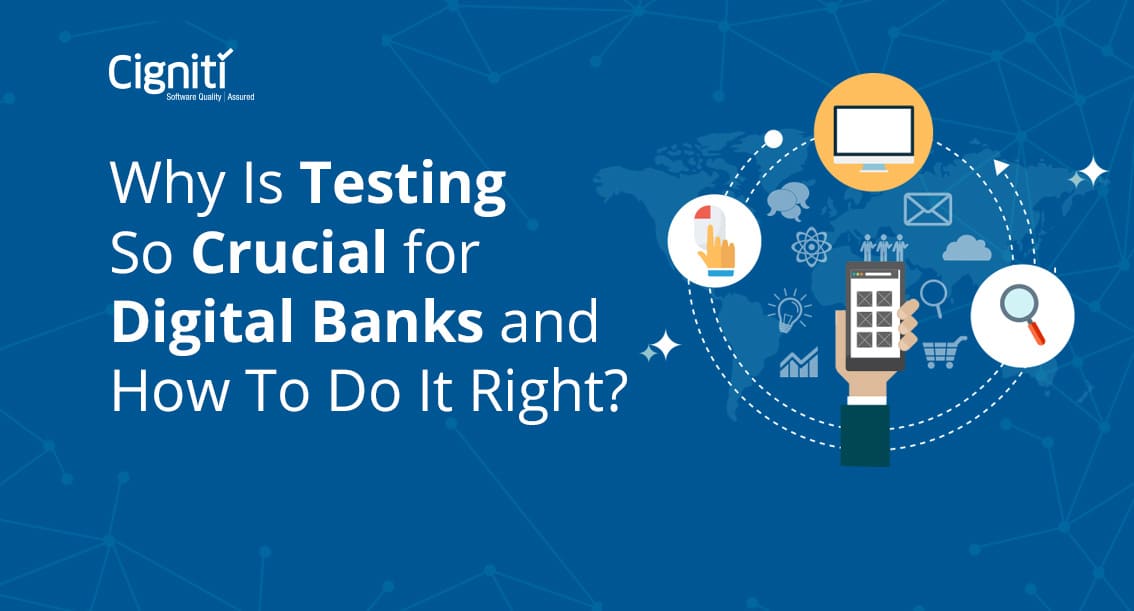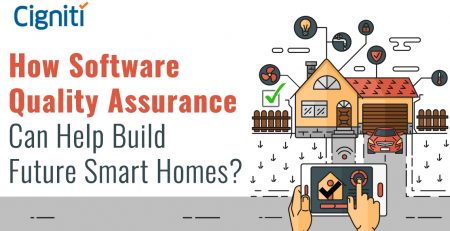The era of Hyperautomation – making smarter automation choices
|
Listen on the go!
|
The advanced technology trend put forth by Gartner has hyperautomation listed for the last two consecutive years. This by itself is a testimony to the fact that we live in the era of hyperautomation.
The hyperautomation market is forecast to reach $200m by 2025, growing at a CAGR of 14% in the period 2019-2025.
Robotic Process Automation (RPA), when amalgamated with Artificial Intelligence (AI), Machine Learning (ML), and intelligence business process management tools, gives a whole new dimension to automation.
According to Gartner, “RPA enriched by AI and ML has become the core enabling technology for hyperautomation. Combining RPA and AI technologies offers the power and flexibility to automate where automation was never possible before: undocumented processes that rely on unstructured data inputs”.
Hyperautomation is an advanced form of automation, serving the purpose of completing tasks and processes faster, more efficiently, and with fewer errors.
It enables enterprises to combine business intelligence systems, complex business requirements, and augmentation of human knowledge and experience, whereas simple automation is used to get simple and repetitive tasks done that don’t need a lot of intelligence.
According to Brian Burke, research vice president at Gartner, “We’ve seen tremendous demand for automating repetitive manual processes and tasks; so robotic process automation was the star technology that companies focused on to do that. That has been happening for a couple of years, but what we’re seeing now is that it’s moved from task-based automation to process-based automation, so automating a number of tasks in a process, to functional automation across multiple processes, and even moving towards automation at the business ecosystem level. So really, the breadth of automation has expanded as we go forward with hyperautomation“.
Hyperautomation came into play when a traditional RPA found it difficult to automate the process of unstructured data.
Switching to hyperautomation has become one of the smarter automation opportunities for many CXOs due to the limitations posed by RPA.
Hyperautomation shifts the focus to more complex work, process simplification, culture in enabling automation, and decision making.
As multiple sets of the latest emerging advanced automation tools and technologies amalgamate to enable hyperautomation, it has become a favorite choice for many businesses.
Strategic technology trends enable hyperautomation
Apart from RPA, the technologies enabling the hyperautomation trend include Intelligent Business Process Management Suites (iBPMS), Process Mining, API’s, Artificial Intelligence/ Machine Learning, Natural Language Processing (NLP), Optical Character Recognition (OCR), and Digital Twin of an Organization (DTO).
iBPMS: An integrated business process management system (iBPMS) is a collection of technologies that work together to coordinate humans and machines in the delivery of business processes. By using business rules, an iBPMS allows organizations to model, implement, and execute sets of interconnected processes. Despite the fact that it has become less popular since the introduction of RPA, it is still a helpful tool for process automation.
APIs: APIs have been available for a long time, as has the technology and frameworks for providing black-box software interfaces. Back in 2002, Jeff Bezos famously pushed all of Amazon to embrace APIs. However, many businesses still use old interfaces to transfer data between programs. Using APIs makes machine-to-machine communication and, as a result, automation easier.
AI/ML: Machines imitate human cognitive processes, and ML is a subclass of AI that includes machine learning algorithms. ML is used by businesses to carry out certain activities without the need for explicit programming, relying on data.
NLP: NLP enables organizations to automate processes that would otherwise be performed by knowledge workers. It allows computers to comprehend unstructured material such as emails, social media posts, and videos. Then, depending on your business’s automation goals, it does sentiment analysis, automatic language translation, or automatic text classification into categories. RPA bots can comprehend the context of a task thanks to NLP technology.
OCR: For some tasks, OCR can replace physical labor. Data in documents can be extracted and converted into machine-readable characters using OCR. Businesses can automate processes where human contact is required to extract data from documents, evaluate it, and take action to complete the task when it is paired with AI and RPA.
DTO: A virtual counterpart of a product, service, or process is known as a digital twin. A DTO allows an organization to see previously unknown relationships between processes, functions, and key performance indicators in order to test the results of automated operations before they are automated.
Hyperautomation applications vary depending on the combination of technologies. Just like the Internet of Things (IoT), the components that constitute hyperautomation are related to each other. With an evolving set of AI technologies, they rapidly identify and automate all possible business processes.
As Gartner Research Director Manjunath Bhat states, “Robots aren’t here to take away our jobs, they’re here to give us a promotion.”
Hyperautomation unlocks more automation opportunities by enabling robots and people to automate together, from basic processes to more complex, long running, end-to-end processes. It should not only be a potential opportunity, but also an inevitable change to the business.
According to Gartner, “Hyperautomation is an unavoidable market state in which organizations must rapidly identify and automate all possible business processes.”
To implement a hyperautomation strategy, it requires the right toolbox and a strategic approach to deliver value.
Key stages that lead up to hyperautomation
Hyperautomation or Intelligent Automation, like IoT, is made up of interconnected components. They operate in a cyclical manner. Automation is at the heart of this procedure. Automation reaches a whole new level when integrated with AI, ML, and intelligent business process management solutions. These are the three pillars of hyperautomation, although the basis is still business analysis and scenario creation in cases when hyperautomation is required.
We have data analytics and other ROI measuring methodologies to close the loop and confirm that the hyperautomation installation is providing the intended, qualitative outcomes. Hyperautomation empowers an enterprise to blend complicated business objectives, business analytics systems, and augmentation of human expertise and experience, where basic automation is used to get prevalent, simplistic, and repetitive tasks done that don’t require a lot of intelligence to be executed.
Some of the key stages that lead up to hyperautomation are as follows –
- Tasks Automation: Without any manual intervention, use different ways to run the tasks that are identified for hyperautomation.
- Architecture Development: The application used to carry out the automated operations should be adaptable enough to interchange data with other intelligent business process management systems. Setting up feeds between interfaces that are essential to make hyperautomation operate, as well as employing APIs that are common enough to allow the maximum amount of software to be merged without problems, are critical to the project’s success. Remember that one of the key goals of hyperautomation is to save the organization a significant amount of time and resources in order to accomplish the desired results more quickly. It won’t be much of a success if the structure for it is complicated.
- Process Automation: It’s time to automate the calls to actions, or the procedures that lead up to particular events, once we’ve determined which activities or actions should be automated. Each company has established parameters within which tasks must be completed. The rules and workflows that drive the activities are detailed in an intelligent hyperautomation configuration. It comprises information that specifies the data required for a task to perform, in a segmented fashion, so it is easy to access them at all times. It is also known as intelligent business process management systems. These operations must be automated so that the controls that determine which events must occur will execute correctly and in the correct order.
- Smart Tools: To collaborate with other people working on it and monitor the processes, a hyperautomation loop should contain tools such as virtual assistants and chatbots.
- AI and ML: The data obtained from the events up to this point is examined with the help of these tools so that the robots or machines that will execute the business operations can describe how they should be done. Data from automation and business operations has previously been kept separate. Further enhancement scopes are identified and implemented using ML and AI, if possible. Consider a language translation program that is run on a simple automatic basis. Business procedures necessitate the translation of data into five other languages in addition to the original. Before the final, translated copies of the data are given to the end customers, the data must be fact checked and its graphics analysed for deep fakes. Only when AI and ML tools are deployed, and their programming executes these enhanced, intelligent processes to turn raw data into finished, better, end user goods in a fraction of the time it would take a person to perform them manually, can automated operations reach the final step.
Low-code usage is encouraged in as many levels as feasible by some businesses. With a basic set of codes already placed into a framework by a third-party vendor, the company can employ graphical user interface approaches to set up their hyperautomation system, such as dragging and dropping the codes they require. With the use of the proper low code in automation, coding from scratch and fitting into a network with the right API may be eliminated, allowing greater focus to be applied to business intelligence duties.
Hyperautomation appears to be the natural next step in the automation path, but a thorough understanding of the concept and its implementation are required to reap the full benefits.
Benefits of Hyperautomation
The benefits of hyper-automation will allow your workforce to be educated with the latest marketplace information and business so that they can perform their roles optimally. Rather than being bogged down by low-level, repetitive tasks, your workforce will remain engaged with their jobs as they seek to resolve problems and provide creative solutions.
Hyper-automation provides your business and its leaders with:
- Identifying and automating all the business processes and possible tasks by combining RPA with AI and BPMS (Business Process Management Suites).
- Using technologies and tools to manage complete automation cycles, ranging from measuring the ROI (Return on Investment) on a large scale to process delivery.
- Using hyperautomation technologies to effectively orchestrate work between bots and humans.
- Achieving a more significant impact by automating and contributing to the process of automation.
Hyperautomation can supplement employment and promote sustainability with the correct tools and technology, while also creating better outcomes and higher profits. The difficulty, on the other hand, is in obtaining the correct tools, combining them, and successfully deploying them in a commercial setting.
Closing thoughts
Hyperautomation extends beyond RPA and is future-proof, allowing machines to read into business processes, learn how they work, assist in their improvement, and continuously improve.
Because hyperautomation evolves and grows with the organization, businesses are prepared for the future even years down the road. They won’t have to worry about their IT infrastructure becoming obsolete.
At Cigniti, we take pride in fortifying our clients’ organizations to tackle the continuously evolving market landscape. With next-gen technologies and experienced industry professionals on our team, we ensure that your organization always stays ahead of the curve.
Cigniti’s Digital assurance & testing solutions address the multi-faceted needs of digital transformation, while keeping agility and customer centricity at the core of our services. We conduct comprehensive testing across your digital value chain, encompassing digital marketing, web portals, web content, digital assets, web analytics, as well as the entire digital ecosystem, including cloud, mobility, big data, and connected devices.
Connect with our experts for your digital assurance needs by scheduling a discussion today!





Leave a Reply